
Please find the earlier review of the same novel i wrote a few years back: Parva: An epic masterpiece – Brown Pundits
Spoilers ahead
Continue reading A civilization born in blood : a relook at the final act of Parva

Please find the earlier review of the same novel i wrote a few years back: Parva: An epic masterpiece – Brown Pundits
Spoilers ahead
Continue reading A civilization born in blood : a relook at the final act of Parva
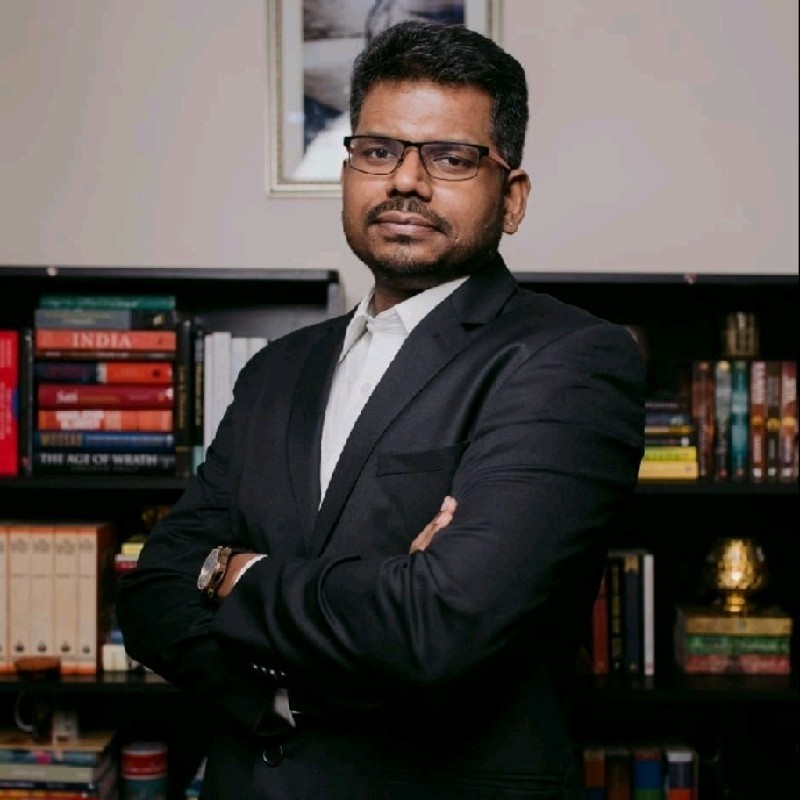
Another Browncast is up. You can listen on Libsyn, Apple, Spotify, and Stitcher (and a variety of other platforms). Probably the easiest way to keep up the podcast since we don’t have a regular schedule is to subscribe to one of the links above!
The podcast was a good experience – a free flowing discussion without much structure. Retrospectively I felt I could have intervened more on some points or countered some of the answers, but I am overall happy with the discussion.
I hope I have this opportunity again to discuss a few more things with Sai.
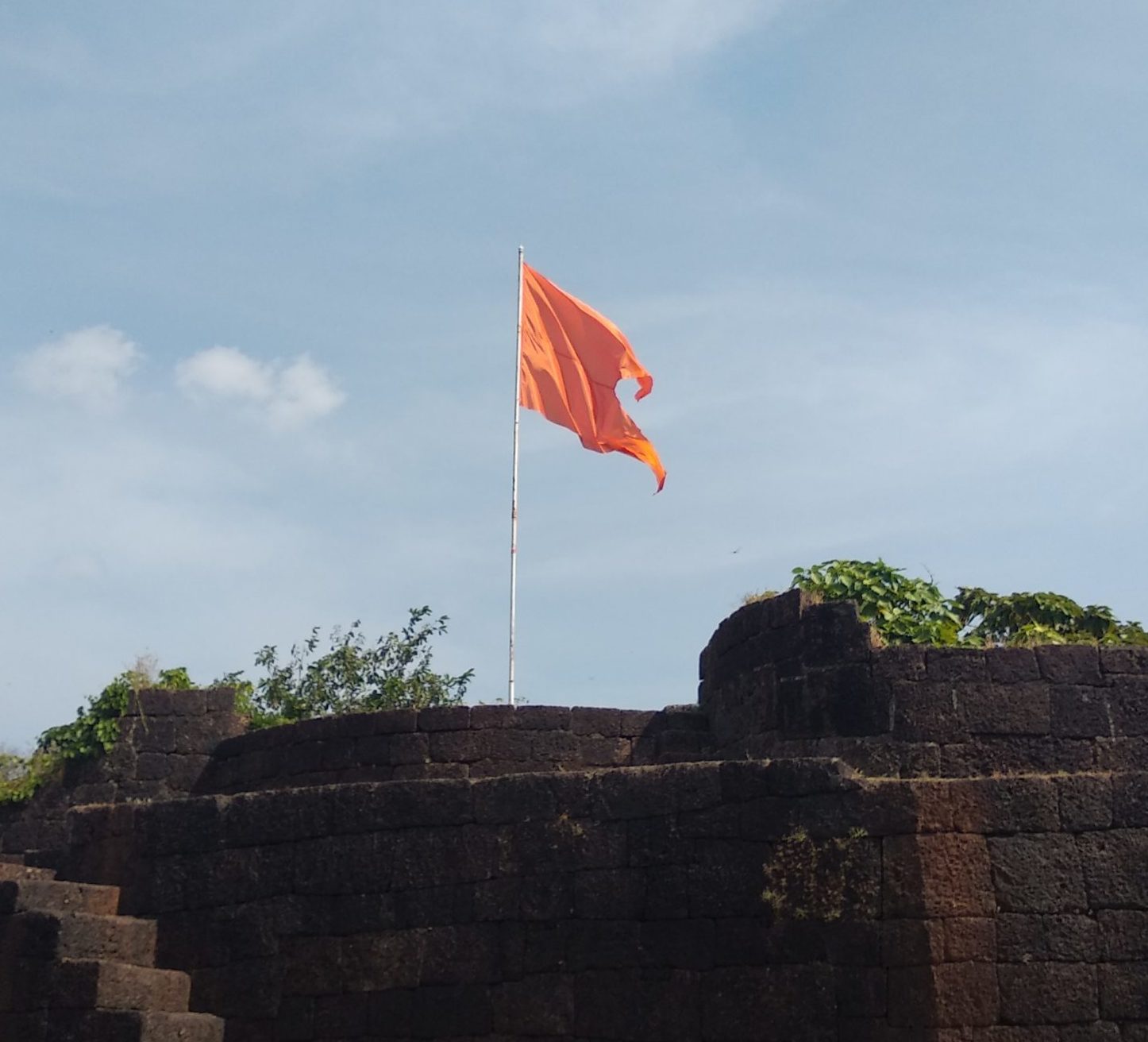
More than 2 years ago I had appeared on the Brownpundits podcast to elucidate a moderate liberal opposition to the Juggernaut of BJP under the prime ministership of Narendra Modi. My political position back then is clear in this interview. My political hope for the 2019 election was a reduced majority for BJP in 2019 to counter some of the nasty excesses which come up in Indian politics when a political party gains absolute power. I was sympathetic to moderate/liberal Hindutva – as in I would have preferred a Gadkari over Modi for what it’s worth. Being a skeptical person by nature, I had never swallowed the whole agenda driven home by Indian and Global Liberal Media viz Cow lynchings or Saffronisation of textbooks or so-called Intolerance debate. My primary criticisms of the BJP government from 2014 to 2019 were the abuse of independent institutions – especially the courts and reserve bank and especially the win-at-all costs mentality when it came to elections – including Hindu-Muslim polarization during elections.
In spite of all my public and social criticisms of the Government and Hindutva project, for most part of the election campaign I considered voting for BJP as the alternative to Modi appeared scarier than anything Modi offered. However, the nomination of Sadhvi Pragya from the Bhopal seat was something I could not digest.
It would be clear to the regular followers on this blog or my followers on twitter or elsewhere that my political orientation has somewhat changed, so let me attempt to flesh out what has been the change and how it came about. One blogpost which summarizes my political/social position in 2020 as liberal is here.
Article 370:
The position of Congress and a whole lot of “opposition” on changes to article 370 (apart from AAP/BSP) is objectively disconnected from ground reality (as was their criticism of Indian government action in Balakot). Nationalism in Indian context has never been associated with the bad odour of European Nationalism, but this reality seems increasingly lost on Indian Liberals.
CAA NRC protests and Delhi Riots:
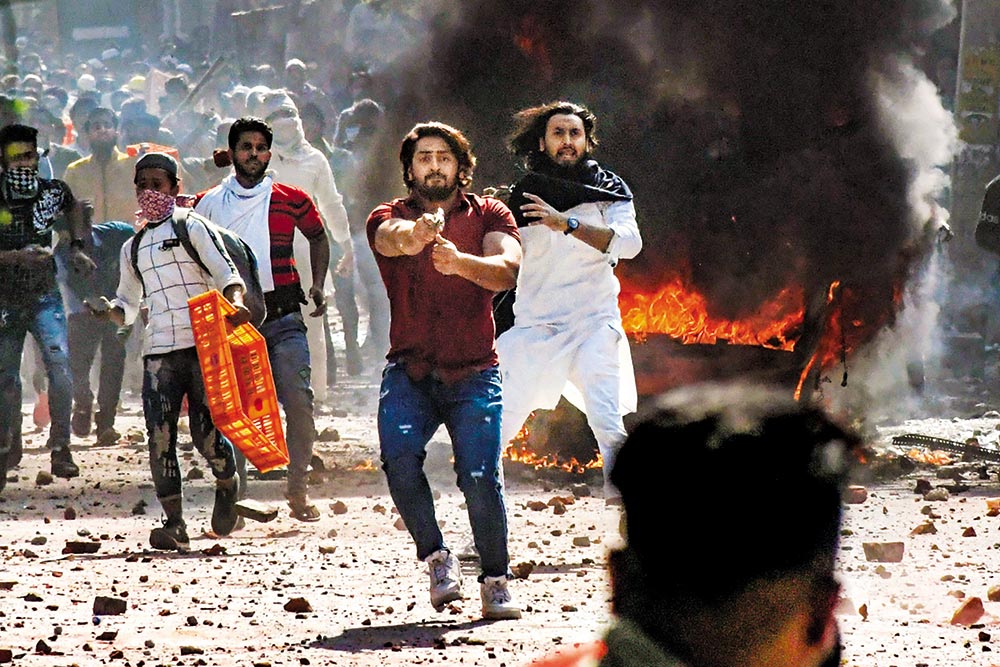
I had described CAA as “the Straw that broke the camel’s back” back in 2020, but the CAA agitations themselves had raised serious doubts in my minds about the Liberal project wrt protests. In retrospect Islam wasn’t just the rock that broke liberalism, but Islam was the rock used by Liberals to attempt to break Hindutva while Liberalism itself became collateral damage. The unconstitutional and often violent protests which led to loss of crores worth of property and finally riots in the national capital were not merely supported but actively encouraged on by Indian Liberals. I had a written the following article calling out the illiberalism of the liberals over the Bloomsbury Delhi riots fiasco. In essence the position a huge segment of Indian liberals espoused was “Free speech till I like it”. I unsubscribed from Newslaundry after a lot of to and fro debates in the letters to Newslaundry section. I continued with my subscription of Swarajya and the Print. I would see this as my transition from Center-Left to Center.
Only the truly deluded would call a riot where 25+% dead are from the majority community (with apparent state support) a pogrom or carnage, but this was a fairly mainstream view in Indian liberal circles.
Covid:
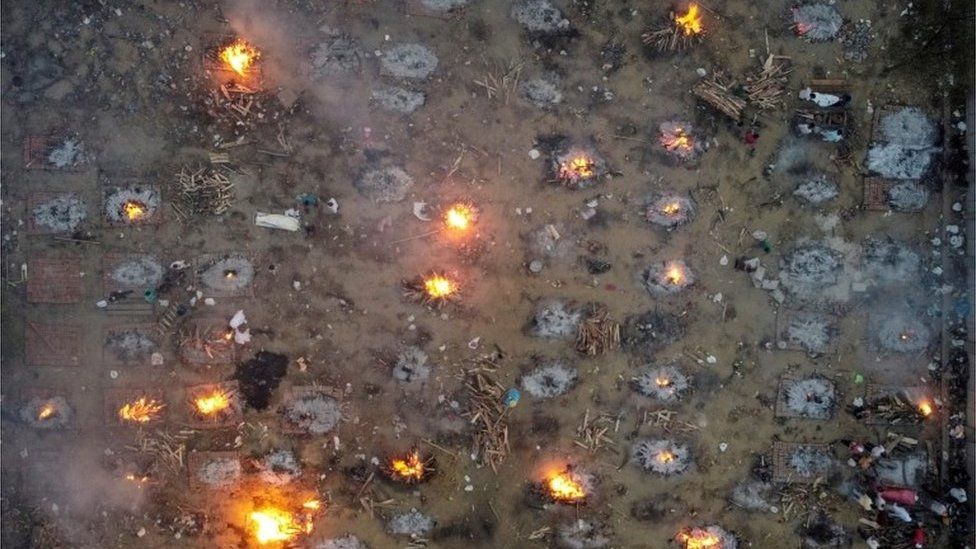
The covid lockdowns truly brought out two extremes in Modi Government’s responses to the problem from the knee jerk overreaction in 2020 to the casual underreaction in March-April 2021. A lot of blame that the government received from all sides was justified, but where justified outrage gives way to sedition or atrocity-porn is often difficult to discern. Yet from the coverage of 2nd wave, it’s fair to say that Indian liberal media (in sync with western media) was extremely unfair in handling India – much to the detriment of Indian image worldwide.
While initial vaccine policy of the Modi government was rightly panned by commentators on all sides of the spectrum, till this day I have not come across a serious liberal voice who is happy with the vaccination program undertaken by the Modi government (an exercise unlike any other in the history for its sheer scale).
Farm Laws:
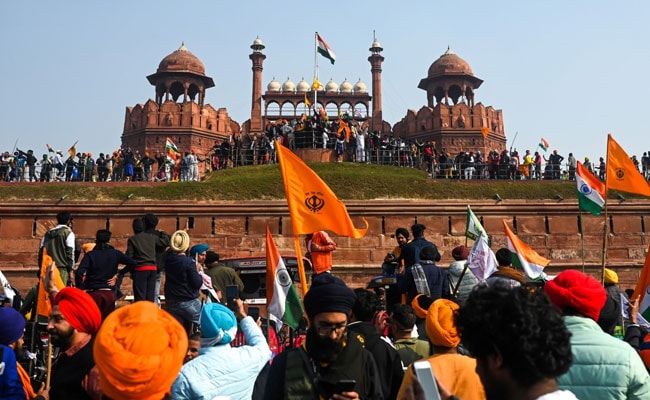
The Government subsidised policies like (i) Rice production in Northwest India, or the (ii) Sugar production in UP and MH have been among the worst agro-economic policies in the 21st century. There is almost a global economic consensus in the need jettison the MSP driven subsidies, for their economic as well as environmental impact. In early 2021, traders, landowners and farmers from 2.5 states with immense help from inside and outside the country, brought a government with majorities in both houses of the parliament on its knees. If a government with comfortable majorities, popular mandate cannot introduce reforms which are popular with the majority of Indian electorate (including farmers), it speaks volumes of the Negative Veto that immensely small minorities can hold over the strongest government this country has seen in 3 decades.
If a Modi government with 304 seats in the Lok Sabha (350 for NDA) cannot bring in much needed reforms, a BJP minority government wouldn’t even be able carry out attacks it carried out against Pakistan. So much for the moderate centrist position for checks and balances. In essence, India remains a democracy with extremely weak state where heckler’s veto is so mainstreamed that moderate centrism is nothing but naiveté at best.
Journalistic integrity (Eg: Lavanya suicide):
I had published this rant when the Lavanya controversy broke on social media. To this day I do not cannot say with certainty if the episode was exactly as represented in the Hindutva social media, but it did make the hypocrisy of coverage pretty clear to me. On its own, this episode isn’t a particularly outrageous one (among a pattern of Liberal media coverage) but this particularly made the Liberal media pattern clearer to me than it had ever been before. The constant gaslighting of atrocities on Hindus owing to fears of Hindu majoritarianism across the board has gone unnoticed for long enough.
Hijab Controversy:
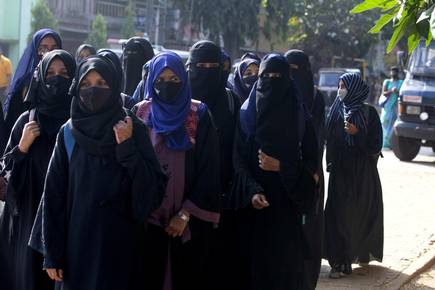
The fact that in year 2022, a dozen girls under the influence of now banned PFI, can hold schools at an impasse over their “right” to drape themselves in a modesty garb (not the headscarf – Hijab is translated loosely as a modesty garment). On the liberal side, only Shekhar Gupta had understood the potential significance of controversy. Given the stance Indian liberals took during the Karnataka Hijab controversy, their silence on Iranian Anti Hijab protests isn’t surprising but consistent with the Faustian bargain they have committed.
Kashi Vishwanath – Nupur Sharma controversy:
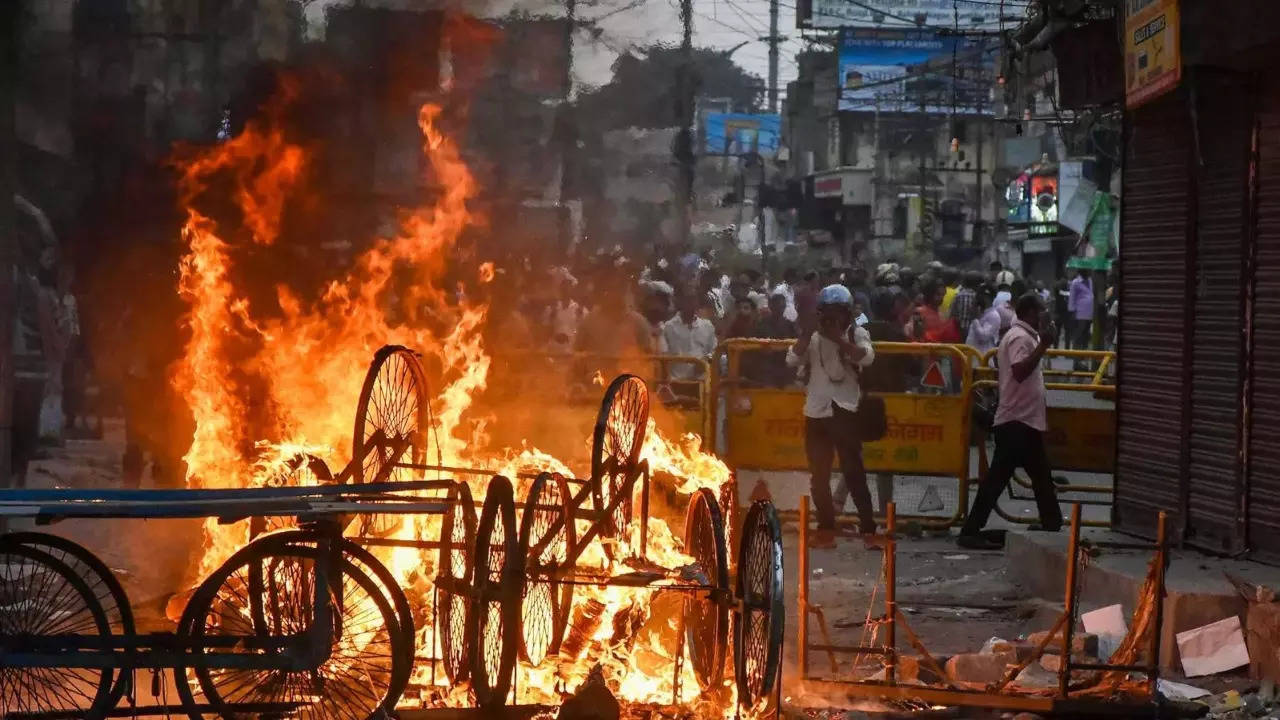
The court verdict of the Kashi Vishwanath excavations notwithstanding, the claims of the Hindu side regarding the existence of Shivling in the Wuzu khana is something difficult to digest for even the most irreligious Hindus (like myself). While it’s imperative to disassociate the acts of medieval religious fanatics from Muslim population today, all the actions of the previous 300 years (if the continued existence of Shivling in Wuzu khana is proven) cannot be wished away. I had personally never been a fan of so-called Truth and Reconciliation program, as I favored the view that contemporary problems don’t need to have their solutions in the history, but this episode has thrown a heavy wrench into that pet-theory of mine.
The Nupur Sharma episode which followed, particularly the antics of “Fart-Checkers” made the binary even clearer with principles being were jettisoned wholesale. An example below:

Munawar Faruqi continues to gain meaningful livelihood in India, Nupur Sharma has no option but to spend the rest of her life as Salman Rushdie did in the 90s and 2000s. A dozen or so Hindus who have committed the act of “blasphemy” have already given up their lives in last 10 years of Hindu resurgence. 100 years after the ethnic cleansing of Kohat Hindus over blasphemy the house of Congress MLA was torched in BJP ruled Karnataka over Newton’s Third Law Blasphemy. What has changed in last 100 years? Additionally, in 2022 the Umesh Kolhe and Kanhaiyalal murders are objectively worse as they weren’t even accused of blasphemy themselves.
An important point worth noting here is, Umesh Kolhe was murdered on 21st June, the news of his death at hands of Islamists only became public on 2-3rd July after Shinde-Fadnavis wrestled the political reins of Maharashtra from the hands of the “Secular” MVA.
Indic/Bharatiya movements:
While I have my disagreements with the Decoloniality movement – crystalized in J Sai Deepak’s India that is Bharat series (my reviews: book 1 – book 2), the movement is one of immense consequence. My own views have changed a lot over last 3-4 years on topics like Temple control, “Coloniality and its legacy” etc after honest engagements (with disagreements) with these thoughts. The colonial hangover is something which has impacted minds of all Indians growing up to a large extent – be it due to Textbooks, Media, Pop-culture. However, once we become aware of some of the inherent biases of these institutions, the impact they had in shaping us will be somewhat eroded with time.
Kashmir Files: (My Review)
Objectively speaking Kashmir files can be proved to be less biased than Haider. While Kashmir files has no positive Muslim character, Haider has no positive Pro-India Kashmiri. Haider was a concoction of imagination while Kashmir files is based entirely on facts (though it can be accused of being selective). Yet Haider was well received by Indians of all ideological spectrum (when it was initially released) while every attempt to discredit Kashmir files was made by the almost the entire Liberal Media and Entertainment industry. Clearly a film like Kashmir files could not have been released hadn’t it been for the overwhelming majority enjoyed by BJP at the Centre.
Love Jihad:
Data points about Cow theft lynching in the range of noise were enough to make India “Lychistan” globally, while statistically significant cases (in the range of hundreds over last 7-8 years) of inter-faith abuse/fraud – more colloquially known as Love-Jihad, was looked at as a conspiracy theory by even Hindutvavadis till a few years ago. Now thanks to the fearless reporting by the likes of Swati Goel among others, “Love Jihad” cases are coming to light at a truly alarming rate. Personally, I have been hearing such cases for at least 2 decades, but I have never taken these rumors or conspiracies seriously. From a purely sociological perspective, it seems an inevitability given the trajectories of various communities in India.
History and perspective:
What one gains out of reading world history is context. Systemic Oppression was a norm and not an outlier in all societies just its flavor varied according to culture. A member of so-called Oppressor Group, guilt tripped into the real and imagined sins of his ancestors will inevitably gain a different perspective about his/her history once he/she reads world history more thoroughly. The “enlightened” position of jettisoning all traditions – lock stock and barrel, appears over the top after getting 30000 feet view of history. As a result, one learns to love and own their own culture without the necessity to always feel ashamed for the past, thus being more committed to defending it.
Coming to recent history, the Pakistan movement remains incompletely studied in school curriculums as well as pop history. Books like Creating a New Medina, MJ Akbar’s Tinderbox (Review by Maneesh Taneja) and now J Sai Deepak’s India Bharat and Pakistan are shattering the hold of mainstream and popular historians the popular discourse. After reading both sides of the history of Islamic exceptionalism in India, one can’t help noticing the unnerving parallels in the events leading to the Khilafat movement in 20th century to events in 21st century.
Being judgmental of the Indian leaders of the 20th century may be unfair, but not learning from their mistakes would be downright foolish. For all the mistakes they may have committed with the benefit of hindsight, the likes of Gandhi, Nehru and Patel in all likelihood understood the unique problem posed to Indian civilization by Islamic exceptionalism. Their tactics and strategies may have been proven wrong, but one can at least say they understood the problem they were facing. Can the same be said about the “Secular” leadership today? Or does the RSS with its moderate face in 2022 play the role of Indian national congress in 1940s and 1950s? Maybe – Maybe not, but the “Secular opposition” today is far removed from the position of even Nehru, let alone Gandhiji or Sardar Patel.
the Other side:
All the points mentioned above cannot whitewash any of the fair criticism (of which bucket load exists) of the Hindutva movement in general and the Modi government in particular. I continue to hold the view that the Abrahamisation of Hinduism is undesirable. I also continue to think the Hindu view of Cow-protection is extremely unpragmatic in the 21st century market driven economy with a population of 1.3 billion. The Bilkis Bano remission cannot be anything but a blot on Indian civilization as a whole. I am extremely skeptical of the apparent resurgence of Hindu orthodoxy visible on Twitter (though one can’t be sure of its implications on the ground). My reservations around the cult of personality of the Narendra Modi remain as strong as ever but it would be childish to deny the fact that Hindutva needs Modi. Almost all the criticisms of authoritarian tendencies one can make of the BJP are criticisms one can make of the opposition with more fervor. (Ketaki Chitale, Arnab Goswami, Bengal violence etc etc).
the Die is cast:
I had read Rajiv Malhotra’s “Breaking India” 7 years ago, I had agreed 50% with his thesis (though I was a BJP supporter back then). More importantly I had found the remaining 50% far-fetched, overstated and conspiratorial. I don’t think I need to re-read the book to claim that I would agree with around 80-90% of the book’s thesis today. From celebrity activists expressing solidarity with Farm law protestors to 9/11 being chosen for Dismantling Global Hindutva, the global anti Hindu/India conspiracy angle doesn’t appear far-fetched if one keeps an open mind and consumes information from all sides of the spectrum. Links of the Communist-Missionary nexus with protests like Sterlite copper plant or the Dravidian or Ambedkarite movements is now out in the open. The manufactured controversies around Mohammad Shami and Arshdeep Singh were so transparent that I am astounded more honest people from the Liberal side haven’t picked it up. Ditto for the call of Arab intervention in Indian domestic affairs – an act even Owaisi condemns in public.
I generally avoid using larger than life words like civilizational cause and arc of history or existential crisis. But the 2.5 front war is here, and it is not a merely political war but a civilizational one. In this context, Liberal Idealism which I once espoused appears to be just another face of pompous and self-righteous naiveté.
As Christopher Hichens famously put it
The barbarians never take a city until someone holds the gates open to them.
The DIE is CAST, Indian liberalism is dead. We might as well pick sides.
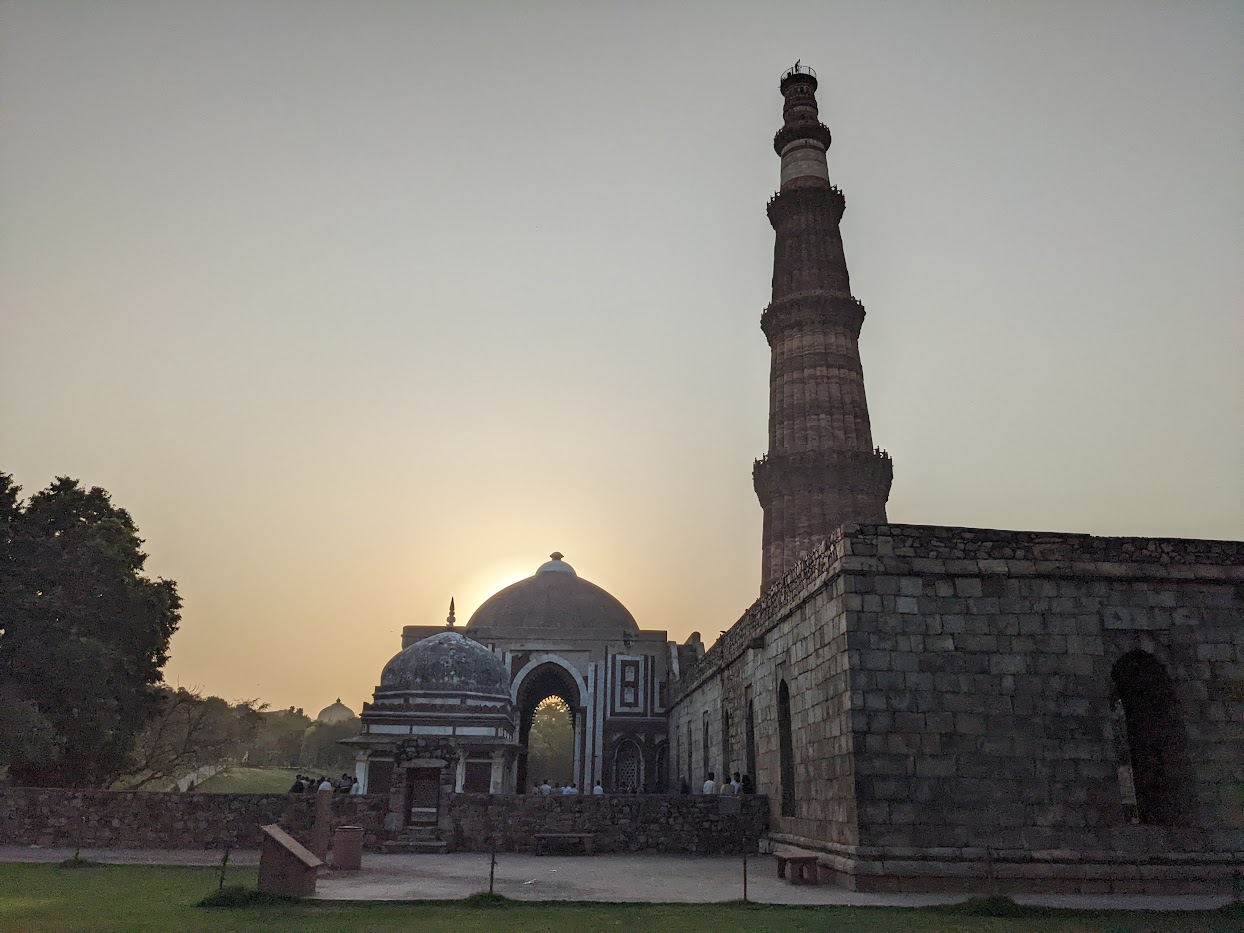
Another BP Podcast is up. You can listen on Libsyn, Apple, Spotify, and Stitcher (and a variety of other platforms). Probably the easiest way to keep up the podcast since we don’t have a regular schedule is to subscribe to one of the links above!
In this episode of the history podcast, Omar and Jay discuss the period of Delhi Sultanate with Jay and Gaurav. We go over all the major dynasties and also discuss the religious, economic aspects of this time.
As Omar Ali puts it, the legacy of Delhi Sultanate is the legacy of Islam in the subcontinent.
References:-
1. The Emergence of the Delhi Sultanate, 1192-1286 by Sunil Kumar
2. The History and Culture of the Indian People: Volume 6: The Delhi Sultanate
3. India in the Persianate Age: 1000-1765 by Richard M. Eaton
4. Medieval India – Vol. 1 by Satish Chandra
5. Advanced Study in the History of Medieval India: Volume I by J L Mehta
6. A Comprehensive History of India: The Delhi Sultanat (A.D. 1206-1526), ed. by Mohammad Habib and Khaliq Ahmad Nizami
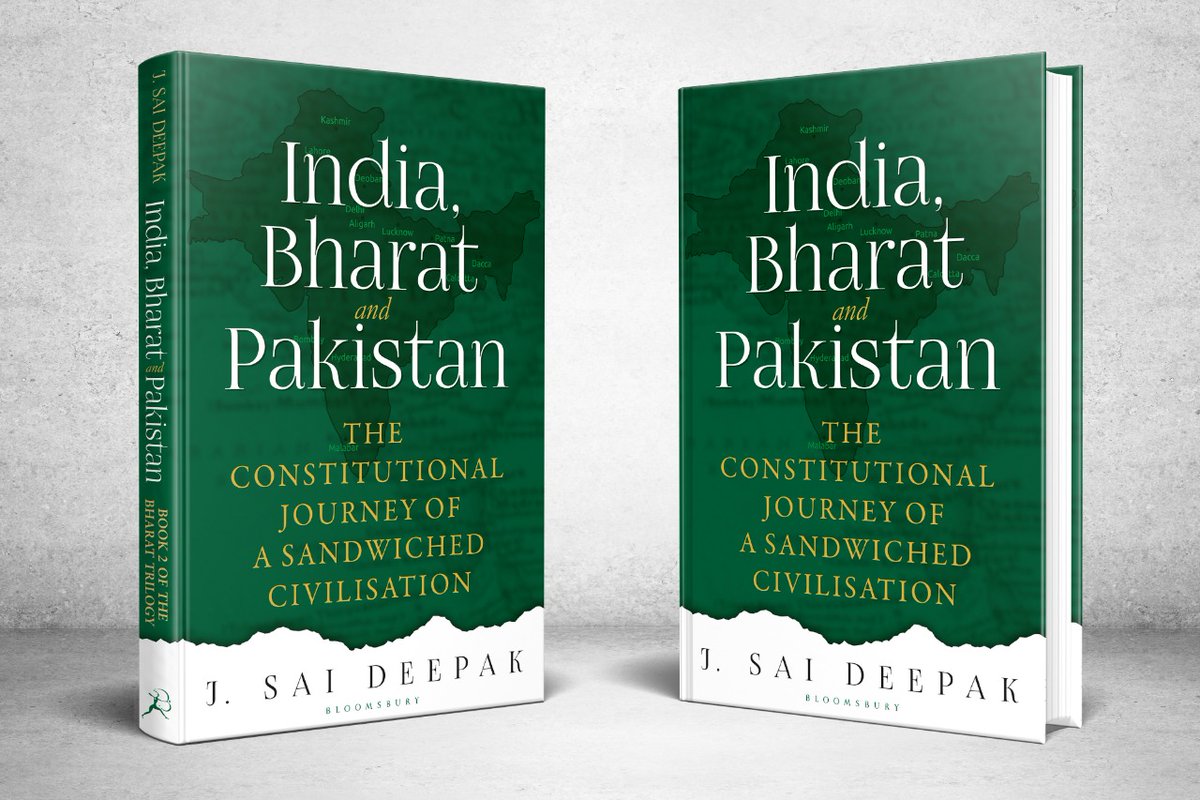
Lawyer and author J Sai Deepak is back with the book of his India that is Bharat Quadrology. I had reviewed his first book India that is Bharat almost a year back – you can find my review here.
The Summary:
J Sai Deepak’s second book dissects the time from the fall of the Mughal empire to the Khilafat movement relying heavily on the tools developed in the first book and a vast number of primary sources. The author also investigates the trail of the Islamic doctrine consolidated during the Fatwa-e-Alamgiri (compiled on orders of Aurangzeb) back to the 13th century Islamic scholar Taymiyyah and Syed Ahmad Sirhindi (a contemporary of Mughal Emperor Akbar).
The two figures covered in detail among the post Mughal Ulema are Shah Wahiullah Dehlawi and Syed Ahmad Baraelvi – the two giants who have shaped the Islamic revivalism in the 18th century. The establishment of Wahhabi power center in Northwest of Punjab, establishment of the various schools of Islam in North India – Deobandi, Barelvi, Ahl-i-Hadith, Ali-garh and the British crackdown of Wahhabism are all discussed in sufficient detail before jumping off to Syed Ahmad Khan and the modern genesis of the two-nation theory. The author then covers all the important events from the Partition of Bengal to the Khilafat movement – relying heavily on primary sources. The book ends with a summary of the Khilafat riots – especially the Mopla massacre.
My 2 Annas:
It took me 3 weeks to complete the first section of the book. I completed the rest of the book in 2 days. I think this statement itself is a review in a nutshell. If I had to give a one phrase review for book 1 it would be “Overstated yet immensely Consequential“, if I have to do the same for book 2 it would be “About time or Oh My Gods“. This is not to say I don’t have disagreements with the book – especially some of author’s conclusions, but the overwhelming thrust of the book is something I strongly agree with.
Firstly, the book busts all the popular notions of two-nation theory and it being solely a creation of the British. The author effectively traces the modern origins of the two-nation theory to Syed Ahmad Khan and the Aligarh movement at the very least. The book also covers some of the lesser-known events from the 19th century – the Wahhabi movement and the conflict in the Northwestern frontier province. The book makes it abundantly clear that Islamic revivalism was less a reaction to Colonialism and more a reaction to Hindu and Sikh resurgence. The fact that both the British and Muslims saw each other as closer religiously and hence more acceptable/worthy instead of the “Hindu” is driven through via a vast number of primary sources.
The common trope among the secular (even Hindutva discourse) about the Syncretic nature of Sufis is addressed (though I felt the author didn’t fully go into this question).

Pan-Islamism and its proponents – especially Al-Afghani are also covered in the book.
Secondly, the book also goes into origins and progress of “Moderate Nationalism” under Indian National Congress right up to the ascendency of the “Mahatma”. I had expected the author to be slightly unfair to the Indian National congress and especially the role of Gandhiji but to my surprise he hasn’t. Though some conclusions may seem a tad unfair at times but because the author relies heavily on primary references the “judgement” is moderated. Most importantly the support of Khilafat which is put firmly on the shoulders of Gandhiji in Hindutva circles, is clearly shown to be a mainstream view of Indian National Congress years before ascendency of Gandhiji, absolving Gandhiji of some of the blame.
The inability of the “Indian nationalism led by Hindus” in dealing the Islamic exceptionalism both before and during the period of “Hindu-Muslim” harmony is on display in the book. The author compares “Coloniality” of the Hindus to the “Rootedness” and “Intransigence” of Muslims for these defeats. Whereas there can be no doubt that Muslim “Intransigence” was important, I find the blame laid on “Coloniality” not watertight.

Take example of Jawaharlal Nehru and Kemal Pasha “Attaturk”. Both were modernizers who tried to jettison the past of their respective countries. What separated them both wasn’t any rootedness or lack of deracination – but a personal attribute, namely political ruthlessness, incidentally something Mohammad Ali Jinnah shared. Kemal Pasha not only broke the tradition of the Khalifa but also forced the Roman alphabet overnight on the Turks. Similarly, in India the two heads who had the most clear-eyed vision of the thread of Islamic exceptionalism were Dr Ambedkar and Veer Savarkar (both “Modernists”). I would instead put the blame on Hindu naivete which is an unfortunate byproduct of Hindu Pluralism – we simply never understood the other. Most of our ReConquistadors (with notable exceptions) did not pursue Reconversions.
Another thing I found mildly irritating in the book (continued from book one) – is the use of the term Middle eastern coloniality/consciousness. Ironically the term “Middle Eastern” itself reeks of its Western Colonial origins. I would have used the term Islamic or Arabic instead, but this is sematic disagreement which doesn’t matter much.
a Not so Gentle Reminder:
Insanity is doing the same thing over and over and expecting different results“.
The disagreements with the author’s conclusions notwithstanding, the book is a not so Gentle Reminder for the India that is Bharat. In retrospect, the compromises Bharatiya nationalism offered, from accepting disproportionate Muslim representation to supporting the fanatical Khilafat movement, may have worked against the Indian civilization itself. While it may be unfair to excessively blame the Bharatiya leaders from the past, it’s imperative to call out those who are flirting with the same approach in the 21st century (incidentally my position a few years ago). Essentially the Hindu leadership made a Faustian bargain and sold their brains. Though Swatyantraveer Savarkar is almost absent from the book, he cast a long shadow in my mind while I read the book.
Another popular trope I felt the author could have busted was the trope that Islamic intransigence in India is largely the legacy of “it having been spread by the sword”. The Mopla carnage was undertaken by descendants of Arab traders who came without any major conflict. Maybe violent intransigence and exclusivity is a feature not a bug.
The book becomes unputdownable after the Lucknow Pact, as the Hindu-Muslim unity discussed here which didn’t even last a decade remains as relevant today as ever. The riots covered in the end of the book – especially the Mopla carnage is almost unbearable to read reminding the reader of Kashmir. The letter by Annie Beasant to Gandhiji stands out. The book also brings into focus some of the lesser-known riots like Kohat. Incidentally the trigger for the Kohat ethnic cleansing was blasphemy, a topic which continues to remain as relevant as ever.
As I write this review a century after Mopla Riots, raids are conducted on Popular Front of India members while the PFI supporters can call for Hartals with partial success in Malabar coast. If the first book was a red pill in a blue jacket (Akshay Alladi (@akshayalladi) / Twitter), this is a केसरी (Saffron) pill in a green jacket.
I have skipped over many topics from the book in this review for brevity, but I would urge the reader of this post to buy and read this book in its entirety and engage with the uncomfortable facts it lays down infront of us.
The book ends with the following quote
Those that fail to learn from history are doomed to repeat it.
The above line becomes even more relevant especially give the way history is taught in India. I would end this review with a quote (in one of its many forms) most people reading this review would recognize.
अश्वत्थामा हतः इति, नरो वा कुंजरोवा !
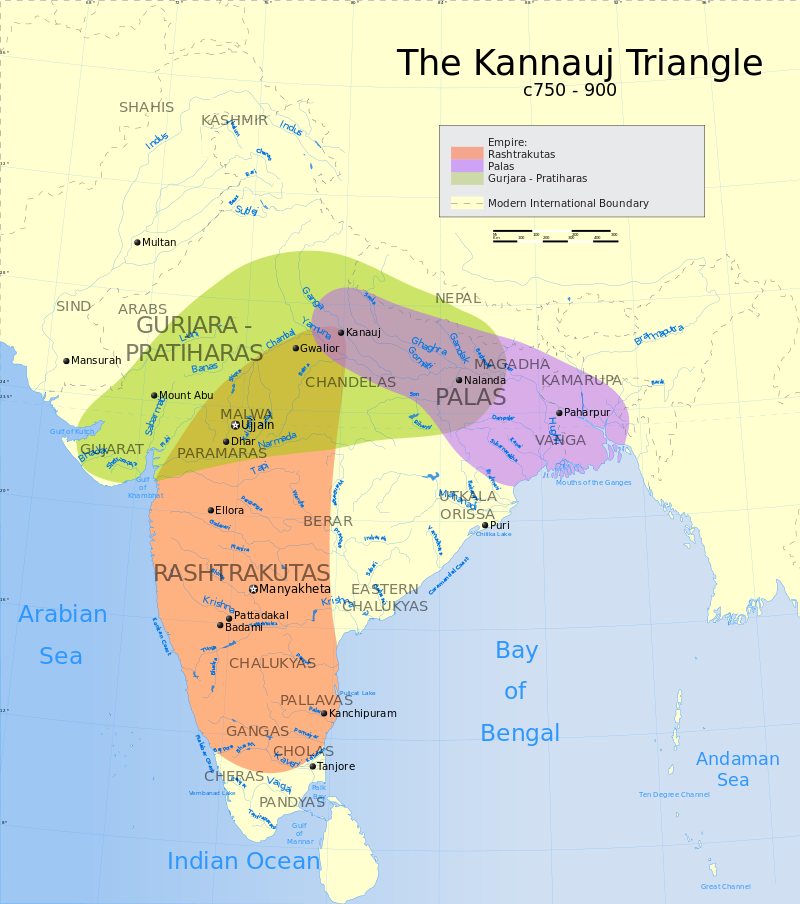
Another Browncast is up. You can listen on Libsyn, Apple, Spotify, and Stitcher (and a variety of other platforms). Probably the easiest way to keep up the podcast since we don’t have a regular schedule is to subscribe to one of the links above!
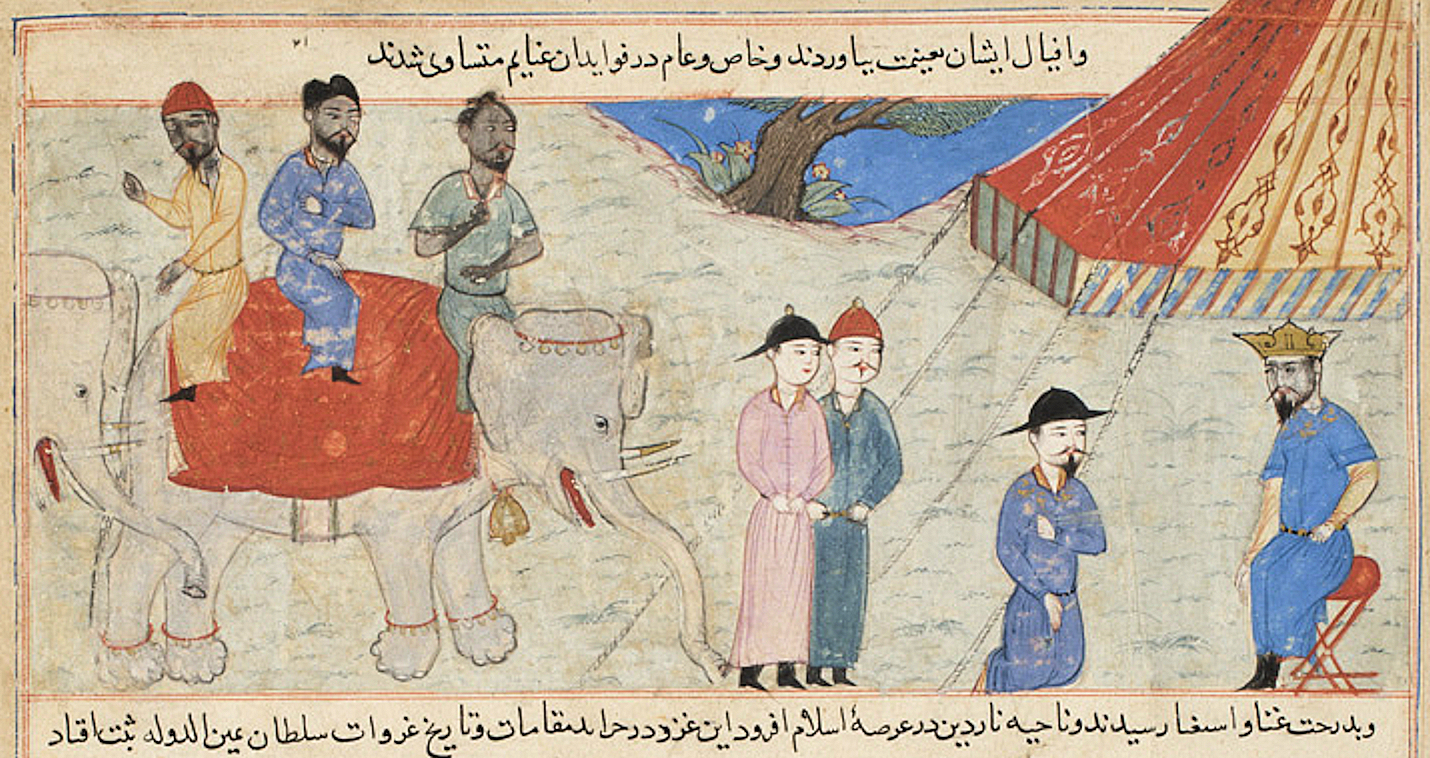
In this episode Maneesh and Gaurav chat with Jay and Omar Ali and they discuss North Indian politics and power struggles for a vast period from 700 CE to 1200 CE. We touch upon the origins of the Imperial Pratiharas and Palas and discuss the tripartrite struggle for domination of Kannauj between the 3 great kingdoms of Indian subcontinent while a storm brewed up in the west. We also talk about the earlier Arab invasions of Sindh and Punjab and the later Turkic invasions by the Ghaznavids and Ghurids which laid the foundation of Islamicate rule in India.
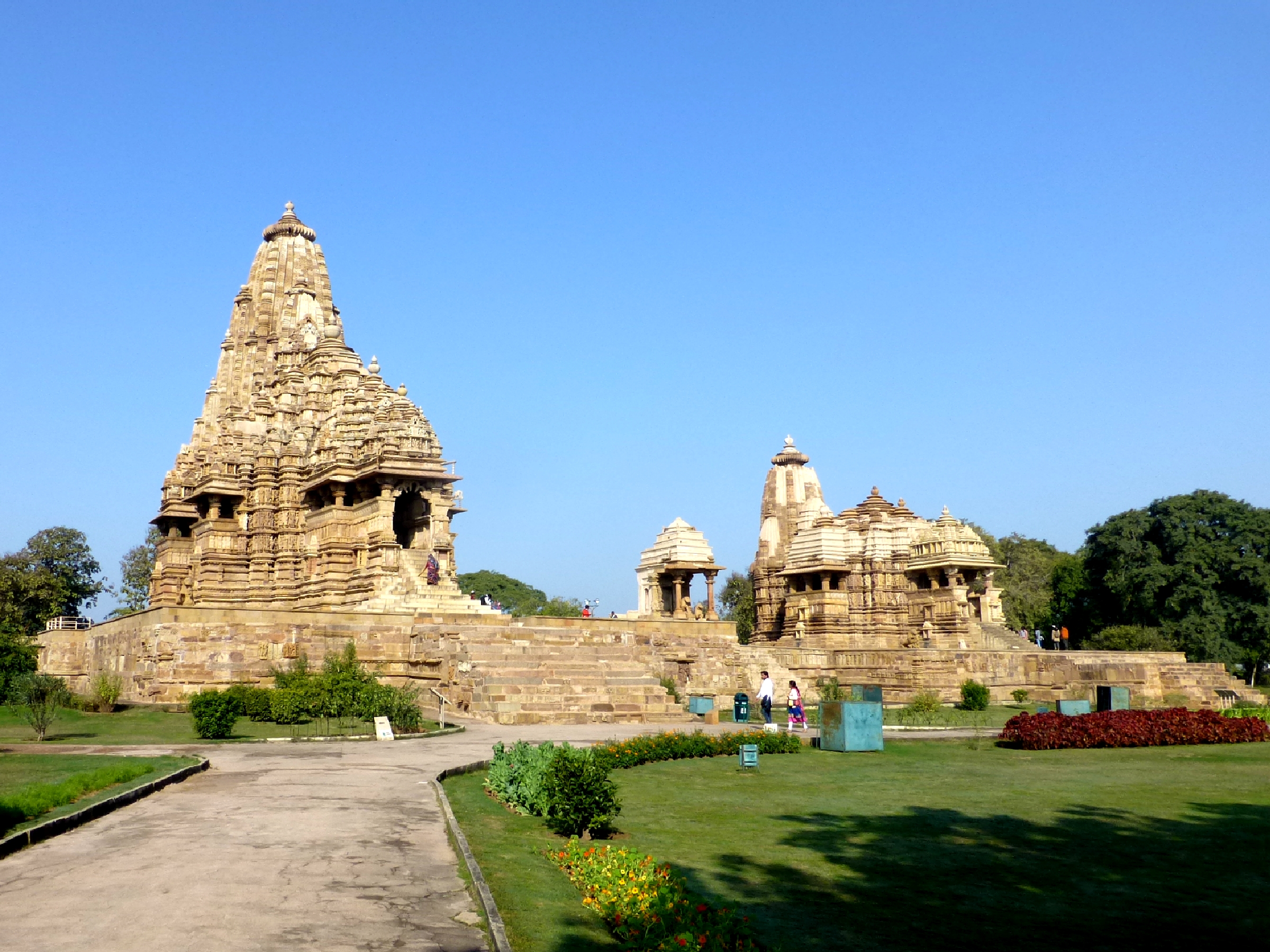
We will cover the Cultural changes of this period in another episode.
Another Map of the era
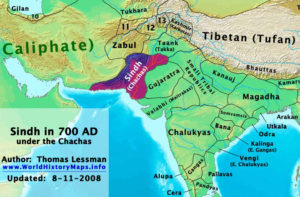
Some Links to stuff discussed in this episode:
Al Beruni, Kitab ul Hind https://www.academia.edu/45077160/Al_birunis_Kitab_Ul_hind
Al Baladhuri: Early Islamic Conquests. https://www.researchgate.net/publication/338318331_Arab_Conquests_and_Early_Islamic_Historiography_The_Futuh_al-Buldan_of_al-Baladhuri
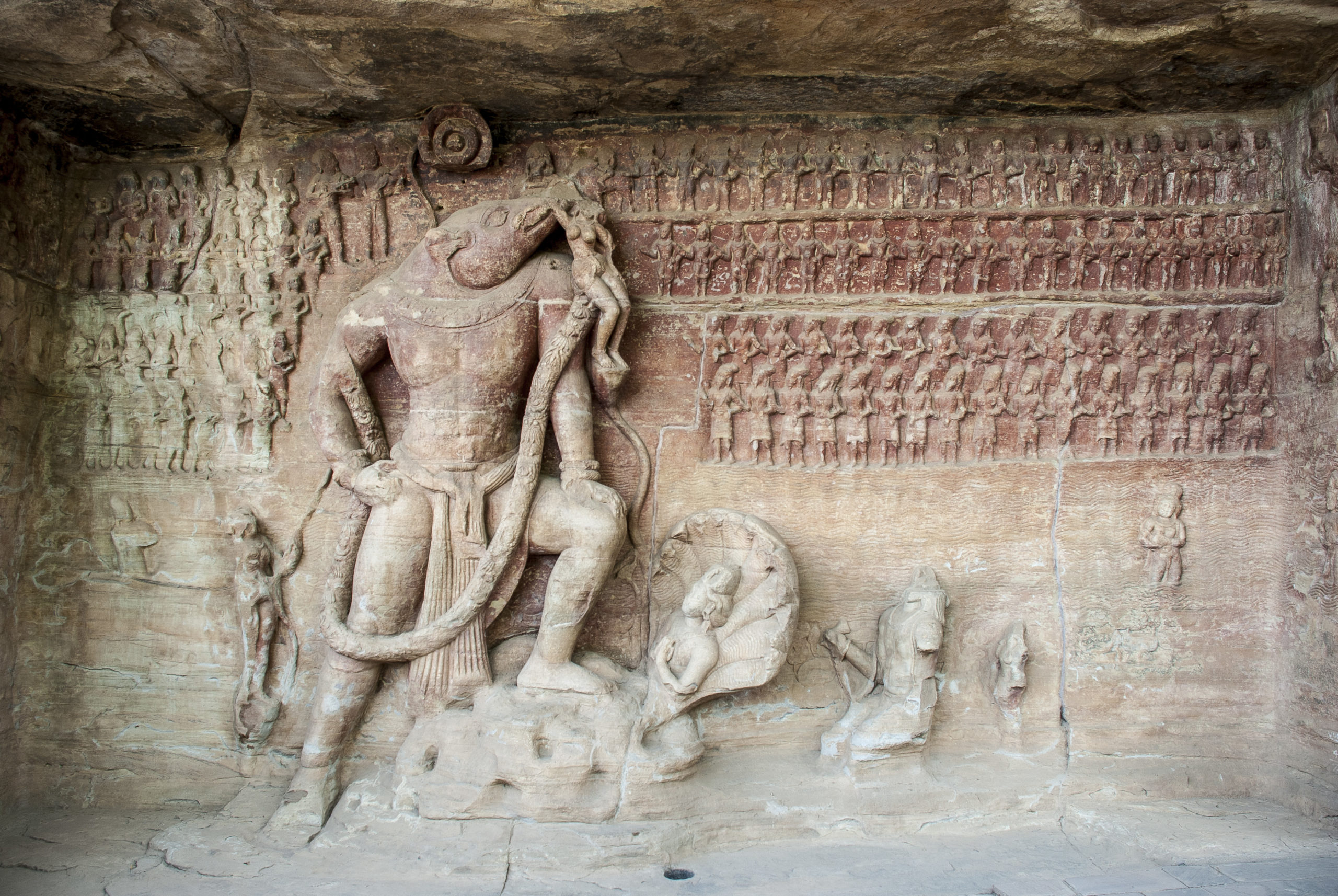
© Asitjain / Wikimedia CommonsAnother Browncast is up. You can listen on Libsyn, Apple, Spotify, and Stitcher (and a variety of other platforms). Probably the easiest way to keep up the podcast since we don’t have a regular schedule is to subscribe to one of the links above!
In this episode of the History series, we return to North India and talk about the Age of the Guptas. We touch upon the military genius of Samudragupta and various Gupta emperors, the emergence of Classical Hinduism and various forms of Art, Music, Science which consolidated during this era. The speakers of the episode are Gaurav Lele and Jay Vardhan and the discussion is moderated by Maneesh.
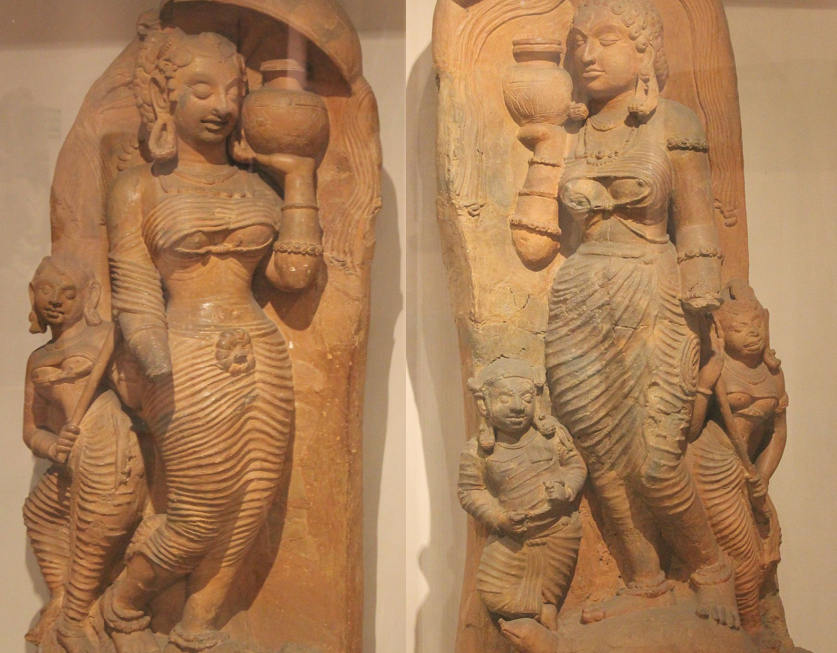
@jayvtweets @maneesht @gaurav_lele
Links to the previous podcasts: Episode 1; Episode 2; Episode 3
Episode 4: Episode 5: Episode 6 Episode 7
Supplementary blogpost : Legacy of the Gupta Age – Brown Pundits
Sources and References:
Books and Blogs
Upinder Singh – Ancient India.
Upinder Singh – Political violence in Ancient India.
Upinder Singh – Culture of Contradictions.
Romila Thapar – Ancient History
RS Sharma- India’s Ancient Past
Gupta Vakataka Age RC Majumdar
Live History India (Paid + unpaid)
Early Hinduism — the epic stratification | by Gaurav Lele | Medium
PODCASTS:
The History of India Podcast – Kit Patrick
Echoes of India Podcast – Aniruddha Kanasetti
https://www.youtube.com/JayVardhanSingh

The rule of the imperial Guptas is generally considered as a Golden Age or Classical Age of Indian history. Generally arguments for “Golden Age” are rife with retrospective imposition or wishful thinking, but still nonetheless the Gupta Age still deserves to be recognized as an age of immense consequence.
Rome fell in the 5th century, a topic on which whole hundreds of careers have prospered over the centuries. On the other hand, the Imperial Guptas – their rise, their fall and their legacy all remain somewhat uncertain but that may be down to Indian history in general. While Rome as a empire existed from before common era, the rise of the Guptas was a much later event. But there would be some interesting parallels in which these two empires. Rome began becoming increasingly Christian during the 4–5 centuries CE. Guptas who were devoted to Bhagvata sect are also seen as the Great Hindu rulers of the subcontinent. One of the major reasons of the fall of Imperial Rome were the series of events triggered by invasions of violent Huns led by Attila the Hun. Similarly the Hunas who invaded subcontinent are said to be distantly related to the Europeans Huns (only distantly) — but essentially nomadic cavalrymen invaded both these empires and fall of these giant empires is in large part attributed to these Central Asian “Barbarians”/ Mlenchhas.
If we assume (as is the case according to most scholars) — that Indian armies were mainly infantry supplemented by elephantry and cavalry — the tactics used by Skandagupta and later indian rulers to defeat these Hunas must have been fascinating — interesting pop culture parallel would be the Dothraki versus the unsullied.
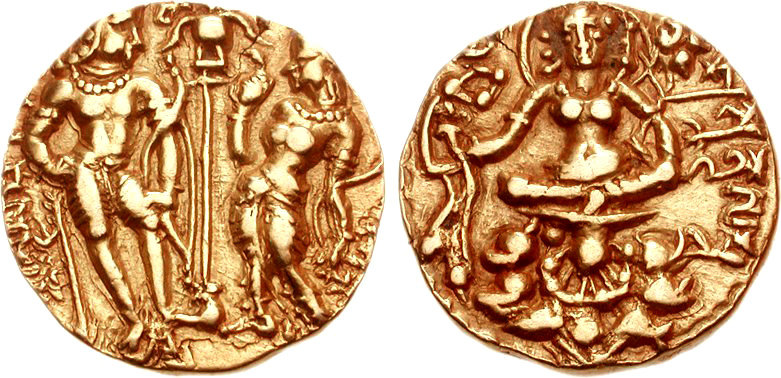
Integration of Classical Hinduism:
Hinduism as we define it today became something clearly recognizable during this time. One interesting way to look at Hinduism is using the metaphor Rajiv Malhotra uses — about Indra’s net — in terms of Software Hinduism is a open architecture software based on the Vedic traditions where different Apps and programs can be installed as long as they are compatible with open architecture. If we are to explain using that analogy — then the various Sampradayas and local deities cults slowly got integrated into the Vedic architecture. The devotional cults of Vishnu and Shiv and Devi clearly had some Vedic as well as non Vedic antecedents . The Bhagvata cult from North India may have had its origins in the Vedic period around the Vrishni Hero Krishna Devakiputra & others like Samkarshana, but by the time of Guptas the Bhagvata sect become something very different. The Puranas which were composed around these times played a key role in the linking of these various cults and deities into a somewhat coherent (yet extremely contradictory) mythology.
Apart from Vaisnava sect — various traditions of Shakta, Saivism and Tantra were also becoming popular. According to most scholars — Saivism was more popular at this time than Vaisnavism. Apart from the imperial Guptas, most other rulers of the time were devotees of Shiv. Whereas the Vaishnava traditions were more synchronized with Vedic traditions, some local, Tantra and Saiva traditions were not accepted in the mainstream Vedic religion. There are many stories of initial conflict of such local cults with Vedic traditions while these cults were slowly integrated into the Shrauta Vedic traditions. (Something I have touched previously in this piece – Hindu Integration: Brahmanas and Gramadevatas – Brown Pundits). The mechanisms of this integration are varied and complex — some deities become avatars of Vishnu — some become children of Shiv and some are added into the complex narratives of the Puranas. Kumārasaṃbhavam by Kalisada is also a fine example of the storytelling employed by composers while weaving this complex mesh of Hinduism.

Devi also becomes increasingly interwoven with other deities — as illustrated by the tale of Mahisasur Mardini from the Puranas. The Udaygiri cave complex is a fantastic example of one of the earliest manifestations of such rich stories and motifs and their interplay — Vishnu as Varaha, Shiv Mukhalingam, Mahisasur mardini, Skanda, Ganesh etc.
In a way traditions based on Vedic Yajna based practices which are more transactional began giving way to more devotional forms of worship. These include grand temples, Teertha Kshetras and Shakti Peeth. Small temples may have existed before — we cannot be sure as archeological record is sparse; but during these times ruler began to patronize rich temples complexes — like the Udaygiri caves, Pravareshwara temple complex – which were mediated by Brahamanas practicing Vedic traditions but focus began shifting on the devotional aspects on faith.
One of the interesting foreign accounts we have of this time is that of Fa-hien — a Buddhist monk from China — who writes about a somewhat Golden age — where crime and punishments are low and people are wealthy, where vegetarianism is a norm and people even abstain from garlic and onions. The important thing to glean out of this is the fact that practices like Vegetarianism were becoming widespread around these times — something that has been linked heavily with Vaisnavism as well as Sramana traditions — especially Jainism. This era was also the time when the Mahabodhi temple, Nalanda university were constructed, so Buddhism was also in fashion as was Jainism — though Jainism seems to be more dominant in the west and south.
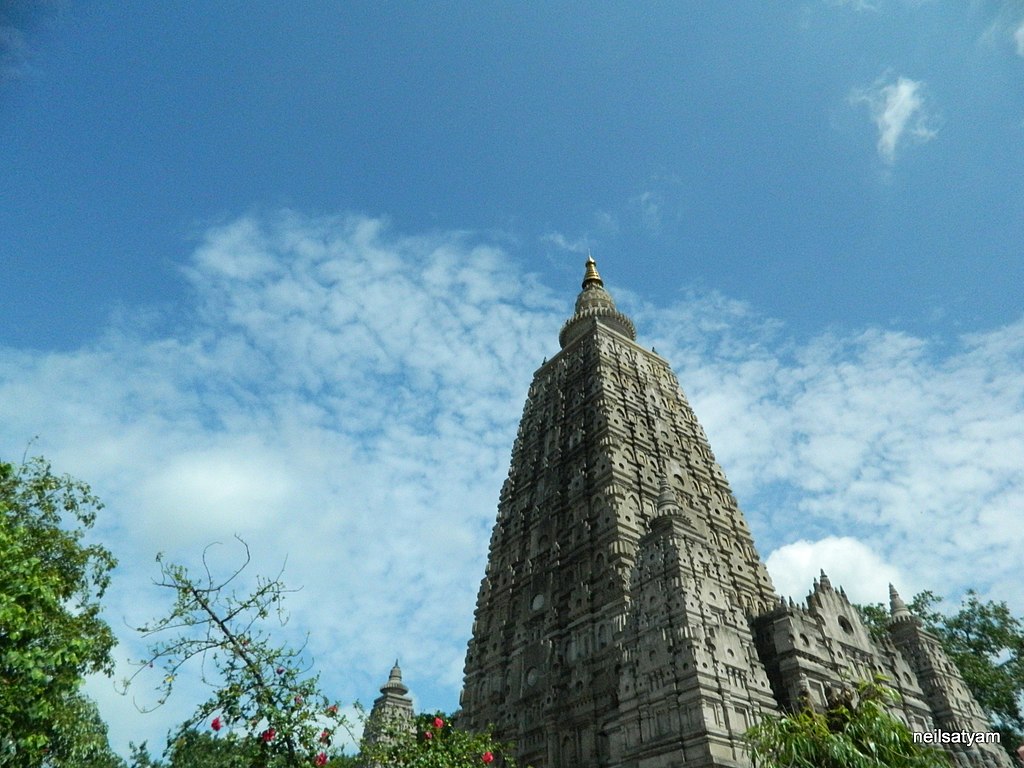
Architecture and Art:
The oldest Hindu temples clearly go back to pre Gupta times but the recognizable Hindu temple forms also took shape during these times. Early temples used to be short constructions made of mainly wood — around 10–10 feet square. Temples with their distinctive “Shikhar” began becoming constructed around this time.
In Cave architecture , apart from the Udaygiri and Elephanta caves (which are not firmly dated) — cave architecture seems to have been predominantly Buddhist — as attested in the fantastic Ajanta caves. Even though some of the early caves of Ajanta cave complex go back to the Satavahanas — like the Karla and Bhaja caves, the more spectacular cave art — both paintings and sculpture goes back to the age of the Golden age of the Vakatakas – around the end of 5th century.
In the times of the Kusanas the art form known as Gandhara sculptor developed (with influence from Greeks), during the Gupta period, the Mathura & Sarnath schools continued to innovate to new heights. The Sarnath Buddhas are considered as one of the greatest art produced in India. Among some other famous sculptures of this times are the terracotta of personified Yamuna and Ganga from Ahhichattra . Yamuna-Ganga figures along with the royal standard Garuda denote the Gupta and their patronage as the Gupta originated from the region of Prayaag.

The Natyasastra which is dated to the first and second centuries CE also deserves a mention while talking about the classical age of India. One of the central concepts of Natyasastra is Rasa — Rasa is what the audience is supposed to feel as an effect of the performance. Rasas and not emotions but they map on to emotions — like Shringara Rasa with love, Vira Rasa with energy — Rasa is not the feeling or emotion but Reaction— which i have to say is a very sophisticated way of looking at it. Audience was not supposed to be a passive observer, but a highly trained and sophisticated participant in the process of Drama. The Natyasastra also prescribes that death, love making, bathing, eating should never be shown on stage and dramas should always end on a positive note — unlike famous Greek tragedies.
Fa-hien also talks about buildings which acted as hospitals existing in north India. The Sushruta Samhita which probably goes back to the late Vedic or early Mahajanpada period, but the Caraka samhita which has many layers was probably work in progress till the Gupta era. The Bower manuscript which is dated to 5–6th century CE gives a fascinating peek into the developments of Ayurveda. It refers to passages from or commentaries on the Caraka Samhita. The text also refers to Sushruta as the one who originally got this knowledge from the king of Kashi.
Legacy of invaders, Indian Kingship and religions:
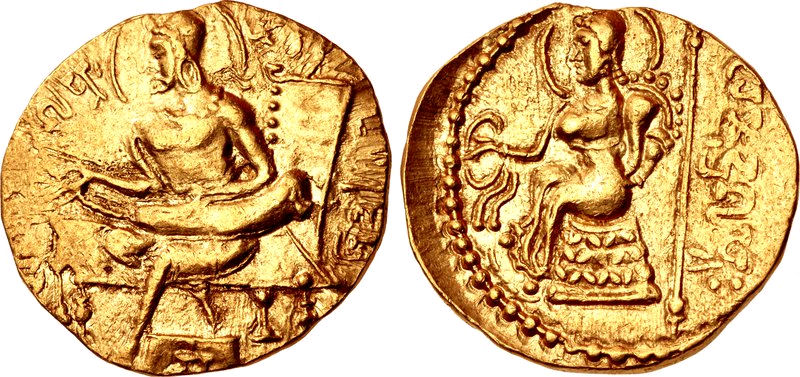
By and large Indian kings right from the times of Bimbisara, rarely persecuted religions sects even if they were personally devoted to some competing sect. This made good pragmatic political sense — this is the argument made by a section of scholars while looking back at these policies of religious pluralism. Many of the ruling elites after the times of the Mauryas like Hunas during this age — were “foreigners”/ Mlencchas — like most steppe warriors of these Hunas must have mostly practiced some form of Iranic religion like the earlier Sakas and Kusanas or Shamanism like the later Mongols. But inspite of what we noted earlier — about Mihirakula being among the few ancient Indian rulers to resort to religious (anti religious) zealotry — the Hunas went native quite soon. These streams of invaders who came to shape the subcontinent from the time of the Buddha to the fall of Gupta empire — Persians, Macedonians, Bactrian Greeks, Sakas, Kusanas, Hunas — we find that all these identities melted into the Melting pot of India. Indian religions — especially Hinduism and Buddhism in large part absorbed, reshaped and restyled the faith systems of the invaders. From between a few generations to few centuries all these invaders “went native” — so in a way what became Classical Hinduism was shaped by these invaders. This integration of the “invaders” would stop in the coming centuries.
Here is a quote from Upinder Singh — History of ancient and earlier medieval india.
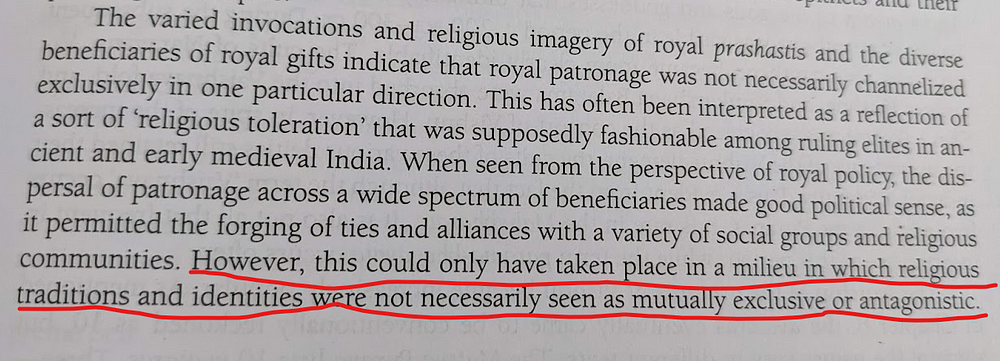
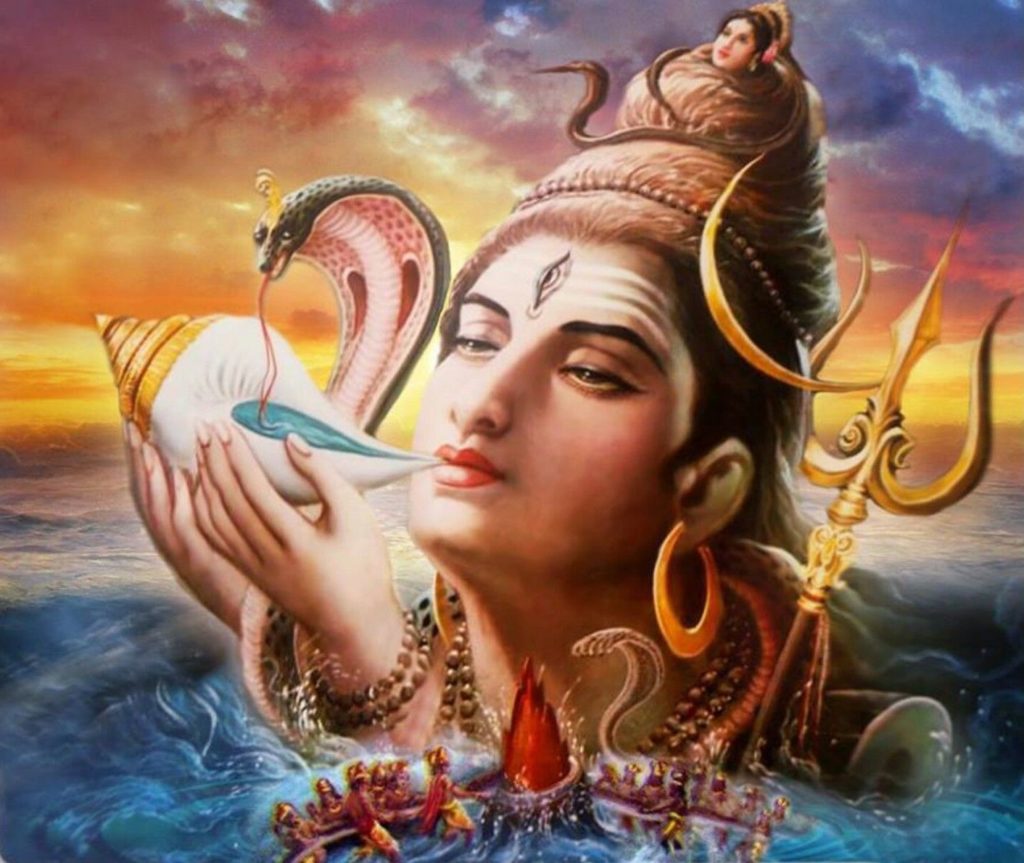
What makes an Indian? Is it the passport? The genetics? The culture? The religion? The food? The fashion? All of the above? It’s a question that’s been hotly debated amongst the citizens of the Indian Republic since the bloody partition and independence of 1947. Praise of India’s diversity finds purchasing power both inside and outside its borders, but this diversity does come at a cost. Between religion, caste, ethnicity, language, and so many other identities, India at times seems to tear from its seams. Harbingers of hatred need no excuse to dig into the annals of history finding division and discord that can be applied today. One proposed division takes us to the time of India’s infancy. From the southern tip of the grand Indian peninsula came an ideology that posited that Dravidians, a speculative group of people who speak Dravidian languages, as the original inhabitants of the subcontinent. The patriarch of this ideology, EV Ramaswamy, known as Periyar amongst his faithful, spewed venom and violence against the “invader” north Indians and their Brahmin patriarchs and progeny.
But how accurate is this notion? Was there an idyllic, secular, and rational society prior to when the first horse hooves of the steppe stampeded into India? Did these “Aryans” bring a foreign religion called Hinduism into India as well and impose it on the Dravidians who followed a now lost faith? Half truths at least; full falsehoods at most.
Societies are stories. They are the fallout of generations of narrations about our past and who we are. Jawaharlal Nehru, freedom fighter and India’s first Prime Minister, sought to weave an “Idea of India” that was a composite tapestry of Hindu and Muslim fabrics. That tapestry has been torn to shreds for several decades now. Instead, it has been Hindutva that has supplanted the Nehruvian sacrament as the sacred fire of the yajna of yore engulfs Indians politics and a common Indian identity built on Dharma gains popularity.
But not all bow to the ritual of these ancients.
There are few places where historical invasions animate the populace more than India. While much of this headspace is focused on more recent Islamic invasions of the medieval era as well as British imperialism of the colonial era, in some pockets of India, headaches originate from invasions in a time where history wasn’t even recorded in India. A missing memory of the subcontinent.
Politics is war without bloodshed while war is politics with bloodshed.
-MAO ZEDONG
These battles are highlighted in the deep south of India, Tamil Nadu and lately have entered elite academic debates on caste. The conflict in Tamil Nadu is over the ancient peopling of India with an onus on the enigmatic Aryans. But this piece is not going to exclusively focus on the migration of the Aryans into India; there are many that do. What we will examine are the many migrations into and within India as well as the present political consequences. But first, let’s establish some quick background.

There are many stellar pieces on the peopling of India. A few I recommend are Razib Khan’s comprehensive piece, Stark Truth About Aryans: A Story of India and Aryāṃśa’s Sons of the Indus: The Indians; I will give a bare and brief synopsis below:
There are other migrations into and outflows from the subcontinent as well, but for now let’s call the aforementioned out as the prominent ones we know of today. Feel free to dive into the 2 pieces I mentioned prior. I highly recommend them as they are treasure troves of information.

One of the most potent lines of rhetoric that stems from Hindutva discourse is that it is fundamentally an indigenous rights movement. “Indigenous rights” – that phrase is a sacred cow today. Conjuring the bloody European campaign of terror that walked in lock step with colonialism, those who were crushed under the European heel are today demanding their reparations and retribution. In Western discourse, you cannot dare to cross these lines of persuasion. Indigeneity evokes powerful emotions and a primordial attachment to the land, where the spirits of ancestors connect to the soil itself.
But where Hindutva’s call of indigeneity faces hurtles is the proposed ancient migrations into India. Keep in mind that migrations have occurred across the world, yet this notion of indigeneity is only challenged in India. The nomadic Mexica people would clear out the valley of Mexico before they established Tenochtitlan and became the Aztecs. A substantial genetic portion and culture of the ancestors of the emblematic Greeks, Romans, hell, so many Europeans come from the steppe in the model we are discussing. The ancient Egyptians did not speak Arabic nor had a 1 to 1 genetic makeup to modern Egyptians. The massive Bantu expansion across Sub-Saharan Africa was not a Mandelan march of peace. Yet it is only in India that this standard of indigeneity is upheld. Indra, who rides an Indian elephant and blesses the agricultural Indian with rain for their crops, is a steppe central Asian god; but Zeus and Thor are decidedly Greek and Nordic. I think you see the double standard here.
While much attention and ire surrounds the entry of the Aryans into India, little is sounded around the Dravidians. And therein lies the hypocrisy. Politics flows from emotion first, then logic.
As we established prior, the Indian population is a mixture of 3 large waves or migrations. This 2nd migration consists of a group that was related to, but distinct from, Iranian agriculturalists in the Zagros mountains. In the shadow of the Zagros is where the people of Elam flourished. From around 3200-540 BCE, the Elamites formed the eastern frontier of the Fertile Crescent. The Elamites worshipped a menagerie of gods, many of whom they shared with Akkadian Mesopotamians, and spoke a purported language isolate; but some believe it had a cognate. The proposed cousin is to the east, in the Indus Saraswati Civilization; a civilization that the Elamites traded with frequently. The proposition is that the ancestors of the Zagros farmers of Elam kept moving east and mingled with the AASI Indians eventually forming the base population for the Indus Saraswati peoples (and much of the genetic makeup of modern Indians themselves). Ironically, this means there was an earlier set of Indo-Iranians prior to the Indo-European speaking Indo-Iranians. History indeed loves to rhyme and repeat!
Whether the Elamites were Dravidian cousins or not, we know that there was a split between those Neolithic farmers that ended up in the Zagros and those that ended up in Himalayas. This is evidenced from recent genetic studies confirming that a woman from the ancient Indus Saraswati site of Rakhigarhi was void of any Iranian Zagros farmer ancestry. The logic of these subsequent discoveries hints that farming may have even been reared independently in India in the cradles of its holy rivers.

But how do we know that the Indus Saraswati people were Dravidian? Well now we start getting to “homeland” for these Dravidians, in the southern realms of this ancient Indian civilization. The southern stretches were primarily spread across Sindh, Gujarat, as well as parts of Baluchistan and Maharashtra. We find geographic toponyms across this region with Dravidian-esque influence. Additionally, we have some scant linguistic evidence dealing with elephants. The hypothesized Proto-Dravidian word, “pīlu,” which meant splitting and supposedly references a tooth or tusk, is found in Mesopotamia circa 1400 BCE via the Akkadian pīri or pīru meaning elephant. This would make sense as trade did exist between both these lands. Regarding the northern realms, things are a bit more murky. Some hypothesize that they spoke a language that was completely wiped out or an ancestor of a language isolate found in Gilgit-Baltistan called Burushaski. However, if we go by the prior rhetoric of evidence, things get even more muddy. Of course the northern subcontinent is dominated by Indo-Aryan toponyms, yet more curiously are recent findings showing Sanskrit words related to music and trade that bear eerie resemblance to Sumerian words, indicating some form of contact. But for now, we’ll stick to more mainstream theories.
Returning to the model of steppe migration, it seems that this was concurrent with both a Dravidian migration into peninsular India as well as a thrust of AASI enriched Indians towards the northwest. This great Indian churn reminiscent of the Samudra Manthan motif or “churning of the cosmic ocean” in the Hindu Puranas is what produced the precursors of Indian culture and society today. The modern Indian was being assembled in this churn. Even more ingredients were added to the mixture through the east through Munda migrations from Southeast Asia. These migrants would particularly populate the DNA of India’s tribals or “adivasis;” a misnomer meaning “first inhabitants” that has been hijacked by political interests to misclassify these tribals as the original people of the Indian subcontinent. As we’ve seen, this is simply not the case.

As these Dravidians reached Tamil Nadu, they too brought with them Vedic culture. This is something that will cause heartburn to the fanciful separatists of Tamil Nationalist bent, but the earliest Tamil literature of the Sangam Era extols the Vedas and Vedic gods such as Vishnu, Shiva, Durga, and Indra. Even the much vilified Tamil Brahmins find praise in the earliest of Tamil texts. There was no separate secular notion in the Tamil nation. This was an Aryan land.
Politicized almost beyond repair, the term “Aryan” is hotly debated amongst historians, geneticists, archeologists, and edgy internet posters across the globe. But why not ask the Aryans themselves?
The term “Arya” originally occurs in the Vedas referring those who adhere to Vedic norms or spoke the Vedic tongue, Sanskrit. Perhaps in an even narrower context in the earlier verses, it refers to those belonging to the Pūru tribe or its eponymous sub-tribe, the Bharatas. In later verses, we see this “Arya” term expanded to other Vedic tribes as well as being using in an abstract sense denoting “pure” or “noble.” Later Indian literature steadies on the dual definitions of “noble” or someone who adheres to Dharmic norms as an “Aryan.”
The common characterization of these Vedic peoples is that they came into India and wiped out the natives, completely destroying their culture and bringing their traditions as the new centerpiece of Indian civilization. But this is not true either. With climate and geological changes, the Indus Saraswati civilization waned eventually collapsing prior to the entry of the steppe people. These steppe people would come into India and indeed would conquer, but they would then be integrated completely. They came, they saw, they conquered, and then they were swallowed.

The people who wrote the Vedas were in love and reverent to the land of India. The rivers, mountains, plains, forests, even the literal dirt itself was holy to them. Their gods were flanked with Indian flora and fauna. They delved into philosophies and rituals alien to the wider world. They were a profoundly unique people who would not be who they were if they did not live and die in India.
Over time, many of the gods who found the most praise in the Vedas, the lords of the elements such as Indra, Varuna, Agni, etc…, would give way to other divinities who would eclipse them in prominence. Vishnu’s greatness could be gleaned throughout the early Vedic verses as he was frequently paired with Indra, Surya, Agni, and light itself. He was referenced as the guardian of the highest home, where a soul that has broken the cycle of reincarnation resides. The dawn of Vishnu and Shiva would arrive with the transition to the Puranas and Itihasa epics. In the Yajurveda, Narayana, a popular epithet for Vishnu, is mentioned as the supreme being. The icon of the Pashupati seal of the Indus, Shiva, known as Rudra in the Vedas also makes frequent appearances as a lord of storms and destruction. Adorned with a cobra for a necklace, his home in the Himalayas, the sacred Ganga river springing from his matted locks, and donning leopard skin, Shiva’s iconic Indian brand radiates his local roots.
But it is in the tales of the Dark Lord that we see a glimpse of which gods would rule the Indian mind. While popular narratives would tell you that a skin color apartheid was enforced by the steppe folk, what’s curious is that dark skin gods would become their supreme deities. They would even beg the gods for dark skin children. The Brihadarayanka Upanishad devotes verses (6.4.16) denoting the high merits and methods needed to conceive dark skinned children; merits and methods that were greater than those needed for lighter shades. Vishnu, whose avatars and epithets possess names frequently alluding to his dark skin color, would rise as a zenith of the Hindu pantheon over the ages. A possible peek into the rise of Vishnu’s prominence lies in the tale of Govardhan.

Krishna, Vishnu’s incarnation, watched as his adoptive father, Nand, prepared to pray to Indra to bless them with rain. The young Krishna would chide his father for fearfully worshipping a god who had grown jealous and arrogant with power. He instead told his father and the villagers to pray to the mountain Govardhan and revere their cattle for those were the true guaranteers of their agricultural success. An incensed Indra would send a terrible torrent on Krishna’s home, Braj, flooding the land. The legend climaxes with Krishna lifting Govardhan with his finger, protecting Braj from the storm, and humbling Indra into obeisance. Perhaps this represents the transition of which god(s) curried the most favor with the ancient Indians. Perhaps not, but it is a convenient tale.
As we continue along the lines of “whataboutery” regarding these Aryans, one eventually reaches a meditating monk under a tree. The Buddhist and Jain traditions, known as Śramanism, are postulated as rebellions or descendants of pre-Aryan Dravidian Indian religion. Yet as we’ve already established the deep roots of Hinduism in pre-steppe India, we must also establish the Aryan roots of Buddhism and Jainism. Both religions recognize caste as a feature of Indian society and even endorse it in some scriptures. Buddha self-designates his way as the Arya Dharma, a reviving of the true way of the Vedas not the corrupted version of his time. He colors his commentary with decidedly Hindu motifs that link his message and incarnation with the great tales and people of India’s Vedic past. Śramanism was a descendent of Vedic thought that would run parallel to orthodox ancient Hinduism (or Brahminism as it is maliciously termed by academia and activists), and both became intertwining strands of a common multifarious Indian Dharma, borrowing from each other with ease and synchronizing concepts with harmony.
“War is deceit,” so said the Prophet Muhammad ages ago amongst the sands of Arabia. Many movements that outwardly appear to be extremely ideological in fact are power struggles for resources on ground. Periyar and his cohort of powerful landed castes in Tamil Nadu, used the garb of Dravidianism and mythical millennia old battles to oust the franchised Brahmins from their powerful positions in Tamil society. Endowed with British cooperation and historical success, the Brahmins of the Tamil country occupied both landlord and administrative roles in the colonial era as well as possessed a culture that strongly emphasized education. Periyar’s poison would flow across the veins of Tamil society with an intense animus of hatred directed towards the Tamil Brahmins. The offensive attire of fanciful rhetoric and minimalistic reductions of ancient migrations resulted in the gradual emigration of many Tamil Brahmins from Tamil Nadu. Additionally, we see almost anti-semitic-like conspiracy theories surrounding the minuscule yet prosperous Brahmin minority, where many blame every evil and sin of society on the conniving control and domination of Brahmins.

The power vacuum left by the Brahmins would be taken up by castes allied with Periyar. To buttress diatribes against the Brahmins, Periyar made it a point to paint Brahmins as Aryan invaders who imposed their religion on the Dravidian society, which he deemed as “secular” and “rational” as opposed to the “superstitious” and oppressive Aryan faith of Hinduism. Periyar would go so far in his malice towards Brahmins so as to encourage the literal hunting and killing of Brahmins in Tamil Nadu. While Dravidianism was supposed to be a panacea to casteism, still we see it unfortunately practiced in Tamil Nadu today. Meanwhile, increasingly violent and xenophobic oratory attempts to cleave the great Tamil culture from the Indian civilization.

So ironic this is, as much of India owes itself to Tamil Nadu. From the wise Vedanta philosopher, Ramanuja, whose ideas catapulted the Bhakti movement across all of India to the great Chola emperors (who funny enough referred to themselves as Aryans) who carried the Tamil crown across the subcontinent and Southeast Asia. Tamil Nadu functioned as the incubator and refuge of a Hinduism ravaged in the north during medieval invasions. Scores of Tamil scientists, especially the former Indian President Dr. APJ Abdul Kalam, would push Indian technology and capability forward making the lives of all Indians better. Yet today, it is Periyar’s ideology that dominates the Tamil political sphere.
One of the more disturbing parts about the effect of such simplistic takes on ancient Indian migrations is a niche form of genetic supremacy that is developing. While some embellish the stature of their steppe DNA, others claim themselves as the true aboriginal of the land due to their large proportion of AASI lineage. They go so far as even asking for reparations based on this poppycock of logic. While there is some correlation between mixes of steppe, IVC, and AASI lineages around caste, it is an imperfect and a diverse amount that is in the end, a mixture. All Indians are an amalgamation of these people to various degrees. There is almost no pure steppe, IVC, or AASI person in the subcontinent (the Andaman Nicobar people may be sole exception on the AASI front). The movement towards heightened caste consciousness combined with the advocation of an almost racial element to caste could be potentially disastrous for India.
India’s history is one of syncretism and synchronization. Multiple identities, ideas, and itihasas were welded together by the Vedic verses millennia ago. Both the Brahmins and Śramanas or priests and ascetics traversed the Indian expanse and spread the message of Dharma. Still, they all agreed on the inherent divinity and sacredness of the subcontinent, of Bhārata. That is what distinguishes these people, these ideas, and these philosophies from the rest of the world. Indeed, as one delves into the story of India, a story that encapsulates much of human history and audacity of both thought and action, one attains the truth in the Mahabharata’s triumphant epilogue:
Whatever is here, may be found elsewhere; what is not cannot be found anywhere else.
-MAHABHARATA 18:56-3
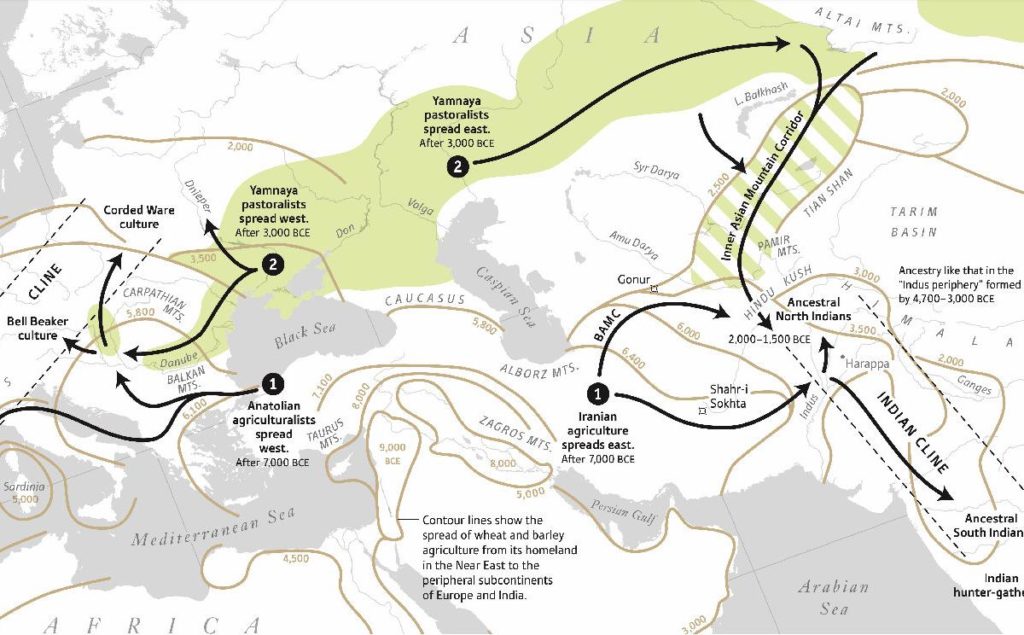
Earlier this month I was part of a podcast discussion about AIT and its counter (OIT?) with Razib, Mukunda, Kushal Mehra, and a Carvaka regular Kartik Mohan. It was a good discussion though I doubt if it would come out as a great podcast.
Personally, I have gone down the AIT/OIT rabbit hole enough last few years to want a long break from these discussions. However, before I take the break, I would like to summarize my current position which would also act as my notes for the podcast. For my position on this topic a year ago please find the following blogpost – From OIT to AIT
You can listen to the podcast here.
Language & Genes:
I firmly believe that ancient genetics is the strongest method for unraveling the mysteries of prehistory. For pre-modern societies, I do not believe there were any mechanisms of the spread of primary languages without mass movements of people. Language is a meme but unlike religions, it has complex mechanisms of spread that take years and requires (in most cases) familial teaching. If we take examples of memetic spread in recorded history – be it the spread of Islam in Southeast Asia or Buddhism in East Asia(via trade, etc) both happened without fundamental alterations in the primary language of the recipient regions. So in essence I do not find the model of primary language shift through mechanisms of trade or other N mechanisms posited as feasible.
As Razib pointed out in the podcast – everywhere on the earth where Indo-European languages were spoken as primary languages in pre-modern times, the Steppe genetic signal is present in substantial amounts. I do not think any other explanation other than some form of Steppe hypothesis can explain this data. Of course, PIE homeland (including Hittite) could be in the Steppe or it could be elsewhere. I believe what we can firmly state is not where PIE originated, but where PIE developed and was spread out of.
If we want to look at a potential model of IA spread into India from the historic record we can take a look at the British isles. The languages are nicely split in the east-west direction along Germanic/Celtic lines similar to the North-South split of Aryan and Dravidian languages in India. Not only that only around 38% ancestry of Britain is Anglo Saxon with an east-west gradient.
Critics of OIT like to attack particulars of the 2007 Anthony book as new evidence is unearthed as if any dissonance in Anthony/Mallory model is a slamdunk against the Steppe hypothesis. Personally, I have no strong positions on the details of the Steppe hypothesis as argued by Anthony and Mallory. The evidence of horseback riding for the Sredny Stog or even the Yamnaya is circumstantial at best (I believe some form of horseback riding as a tool of herding by young shepherds might have been a possibility), so we cannot firmly assume that horseback riding was the reason for the massive demographic changes brought about by the Steppe men. This might have mattered before the ancient DNA revolution, but now we know the genes of the steppe pastoralists spread, maybe because of the horseback riding or maybe just due to the benefits of horse husbandry or some other reasons. We know massive demographic and (probably) linguistic changes occurred from the Steppes, the “how” question might eventually get solved (or it might not) – but that doesn’t poke holes in the larger “Steppe hypothesis” built on top of Archaeogenetics.
This doesn’t mean that any other mechanism of IE spread cannot work with the available data but it has to go beyond the tenuous mechanisms like trade-aided language spread. Even the Elite migration hypothesis (minus demographic changes) doesn’t seem to work as well as we assumed before the ancient DNA. The Hittite and Mitanni IE elites did not cause any substantial demographic changes nor did they cause any long-term linguistic alterations in the middle eastern region. Closer to home, Indians have had elite rules who spoke Greek, Iranian languages, Turkic languages, and lastly English. These massive elite dominations for centuries have only resulted in superstrates and languages like Urdu (I am not sure if we call it a creole). By the end of an efficient British Raj, not even 1% of Indians spoke English as a primary language. Thus anyone who tries to explain away IA spread out of India has to account for the 20-30% paternal ancestry (50% Y chromosomes) which seems to have changed in the other direction. This paternal ancestry matters a lot as we know the ancient Aryas were patriarchal, patrilineal, and patrifocal.
Also, it is often overlooked that AIT is just one node of the larger PIE – Steppe hypothesis. Even if details of AIT are contested how much does that matter to the PIE question? Also even if PIE shifts out of Pontic Steppe into Iran or Anatolia it would still be against any model for OIT and in favor of some form of AIT.
As I tried pointing out in the podcast, I see a lot of issues with Talageri and other OIT (anti-AIT scenarios) – I have not read Talageri’s books yet but have read his blog posts and interpretation of RV and listened to his podcasts on Carvaka. My points against those interpretations are
However to conclusively deny these assertions one would have to do a meta-analysis of RV, if ever I get down this rabbit hole in the future I might do it myself. However in the meantime, one can look at this.
Needless to say, such interpretations will remain “circumstantial” be they in support of the AIT or OIT. After all, RV only captures a thread of the ancient Indian past while the others may be completely lost.
Personally, I would be open to alternative scenarios to explain the IA spread into India, like IA migration during the IVC (before the Sintastha) while migrations downstream of Sintastha which are attested via Genetics being responsible for the consolidation of Aryas as Kshatriya/Brahmana elites of the Vedic age. But these are extraordinary scenarios and they would require at least some robust objective pieces of evidence like
Outside the world of religion and mathematics, there is no absolute certainty. As a result outlier individuals from academic disciplines will continue to have non-conformist takes (like Kazanas for example). Such takes over the decades will continue to be used to create elaborate theories, be it using linguistics, genetics, and something else and they will continue getting traction in some groups (European pagans, Serb nationalists, Indian nationalists). The solutions to the PIE question are models, some more parsimonious; some tenuous, others ridiculous. There is certainly enough circumstantial data to spin wild theories putting the homeland from Iberia (initial bell beakers) to Gangetic plains (OIT), but none of these theories is the best fit for the data we have today. Maybe with newer data, some better candidates can emerge (though I doubt it). But going by the academic consensus from 3 fields -> Genetics, Linguistics, and Archaeology some model of the Steppe hypothesis is the best fit for the Indo-European question.
But for all, we know someone can still spin a theory based on some evidence that puts the PIE homeland in the sunken Atlantis.
Post Script:
I have had enough of the AIT/OIT debate and I will be avoiding this topic in the future. It has become a political and emotional topic and there is only so much that there can be no conclusion as what people assume to be at stake isn’t merely an academic question like Pre-Clovis peopling of the Americas.